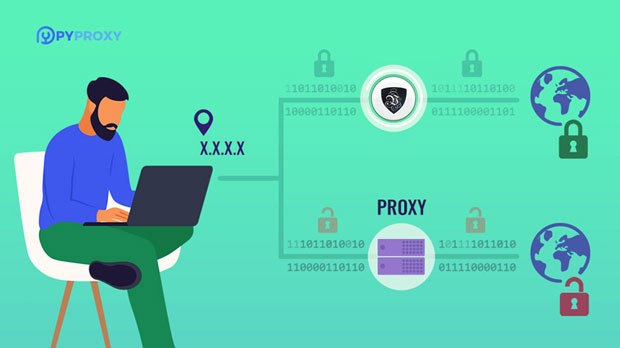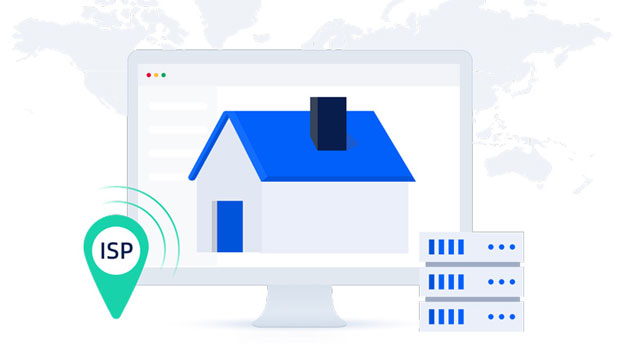When it comes to web scraping, browsing anonymously, or ensuring secure access to websites, proxies play a crucial role. Two of the most well-known proxy providers are PYPROXY and Netnut. Both offer various solutions for browsing the internet securely, but their compatibility when accessing websites via HTTP is a critical factor for users. In this article, we will analyze and compare Pyproxy and Netnut in terms of their compatibility, focusing on HTTP website access. We will also examine the features, performance, and usability of both, helping you make an informed decision for your proxy needs. What is Pyproxy?Pyproxy is a proxy service that allows users to route their internet traffic through various proxies, ensuring anonymity and bypassing geo-restrictions. It offers a simple, Python-based framework for proxy usage, which makes it popular for developers and those working on web scraping projects. Pyproxy supports both HTTP and HTTPS protocols, making it versatile for different use cases. It also allows users to use proxy pools to distribute traffic across multiple IP addresses, enhancing security and reducing the risk of being detected.What is Netnut?Netnut is another proxy provider that focuses on offering high-quality, residential proxy services. It has built a reputation for its stability and performance in the proxy space. Unlike traditional data-center proxies, Netnut utilizes real residential IP addresses to ensure more reliable and realistic traffic patterns. This can be particularly useful when accessing websites that are sensitive to bot traffic. Netnut also offers a wide range of protocols, including HTTP, HTTPS, and SOCKS5, to provide flexible options for users. Additionally, its real-time proxy pool management helps users avoid detection.Pyproxy Compatibility with HTTP WebsitesPyproxy’s compatibility with HTTP websites is largely influenced by its reliance on proxy pools and its ability to rotate IP addresses. Since many websites, especially those running on HTTP protocols, are less secure than their HTTPS counterparts, they can be more vulnerable to detection by common anti-bot measures. Pyproxy, however, uses various techniques to help users bypass these measures, such as randomizing IP addresses and adjusting traffic patterns.The flexibility of Pyproxy allows it to work with a broad range of HTTP websites, although the performance can vary depending on the proxy servers being used. For example, if you are accessing a large number of HTTP websites, you might experience throttling or IP blacklisting, especially if you are using free or low-tier proxy services. However, with paid or dedicated proxies, Pyproxy’s compatibility improves significantly, ensuring smoother browsing experiences.Netnut Compatibility with HTTP WebsitesNetnut’s residential proxies provide excellent compatibility with HTTP websites. Since these proxies use real residential IPs, they tend to blend in better with regular user traffic, making them harder to detect by anti-bot systems. This is especially important when accessing websites that rely on HTTP protocols, which may have more vulnerable security mechanisms.Netnut’s high-quality residential IPs also mean that users experience fewer blocks, CAPTCHAs, or IP bans when accessing HTTP websites. The proxy pool is constantly updated, ensuring that users have access to fresh IPs, which can be crucial when scraping or browsing multiple HTTP-based websites. Additionally, Netnut’s robust infrastructure and protocol support (including HTTP, HTTPS, and SOCKS5) ensure that it remains highly compatible with various types of websites, regardless of their security protocols.Performance: Pyproxy vs NetnutPerformance plays a vital role when choosing between Pyproxy and Netnut for HTTP website access. While both offer reliable services, their performance varies due to different underlying technologies.Pyproxy’s Performance: Pyproxy offers excellent performance when used with premium proxies. However, its performance might dip when using free or shared proxies due to congestion or limited bandwidth. Pyproxy also experiences some latency when dealing with large-scale scraping tasks, especially if the target websites use complex anti-bot systems. Still, for light browsing or small projects, Pyproxy offers a good balance between cost and performance.Netnut’s Performance: Netnut is known for its high-quality residential proxies, which provide faster and more stable connections, especially for HTTP websites. Since residential IPs are less likely to be flagged or blacklisted, users often experience fewer disruptions in service. Netnut’s infrastructure ensures that connections are stable, which is essential for consistent web scraping or anonymous browsing. Moreover, the speed of residential proxies is usually on par with data-center proxies, making Netnut an excellent choice for large-scale projects.Security and Anonymity: Pyproxy vs NetnutBoth Pyproxy and Netnut provide secure and anonymous browsing, but they approach it differently.Pyproxy’s Security: Pyproxy leverages rotating proxy pools to minimize the risk of detection. Its use of multiple IP addresses reduces the chances of your real IP being exposed, ensuring better privacy. However, depending on the proxy pool you use, there may still be risks of IP blacklisting or CAPTCHA challenges, especially when dealing with HTTP websites with basic security measures.Netnut’s Security: Netnut offers superior security, primarily due to its use of real residential IP addresses. These IPs are less likely to trigger alarms from websites and are harder to detect as proxy traffic. This means users can browse or scrape HTTP websites with less risk of exposure. Netnut’s residential proxy network is continuously monitored and updated, ensuring that users have access to fresh IPs and lower risks of detection.Usability and Integration: Pyproxy vs NetnutPyproxy’s Usability: Pyproxy is easy to use for developers and those familiar with Python. Its simple integration with Python libraries makes it ideal for automating web scraping tasks or creating custom proxy setups. However, for beginners, it might require some technical knowledge to set up and optimize for HTTP website access.Netnut’s Usability: Netnut, on the other hand, provides a more user-friendly experience. It offers a straightforward dashboard for managing proxies and allows users to quickly integrate with different applications and scripts. Whether you're working with HTTP or HTTPS websites, Netnut’s interface simplifies proxy management, making it easier for non-technical users to get started.Pricing: Pyproxy vs NetnutPyproxy’s Pricing: Pyproxy offers flexible pricing plans based on the number of proxies you need and the level of service. While it has free options, they are limited in terms of performance and security. Paid plans are more expensive, but they provide higher-quality proxies with better performance and compatibility for HTTP websites.Netnut’s Pricing: Netnut is generally more expensive than Pyproxy, but it offers premium residential IPs, which are often worth the cost for users who need high performance and fewer blocks. Netnut’s pricing is based on the volume of traffic you plan to route through their proxies, and their pricing is transparent, with no hidden fees.ConclusionWhen comparing Pyproxy and Netnut for HTTP website access, it’s clear that both offer valuable features, but they cater to different needs. Pyproxy is a more affordable option, especially for developers and users with some technical expertise. However, its performance can be inconsistent when accessing HTTP websites, particularly when using free proxies. Netnut, on the other hand, offers superior compatibility, security, and performance with HTTP websites, thanks to its use of real residential IPs. It’s an excellent choice for users who require high-quality proxies for large-scale web scraping or anonymous browsing. However, it comes at a higher price point, which may not be suitable for smaller projects.Ultimately, the choice between Pyproxy and Netnut depends on your specific needs, budget, and the level of performance and security you require. For reliable, large-scale HTTP website access with minimal detection, Netnut is the better option. However, if you’re on a budget or need a more flexible proxy solution, Pyproxy can still provide solid compatibility and performance.
Oct 11, 2025



































































